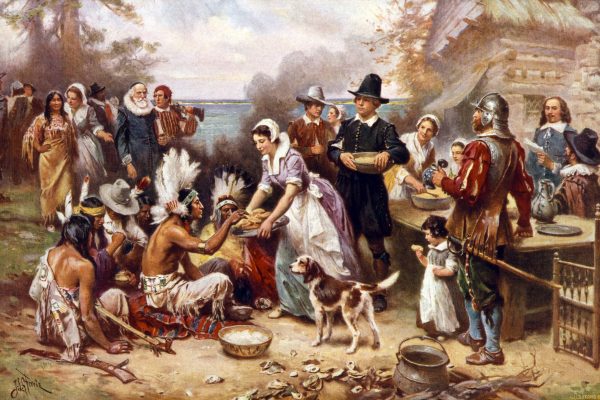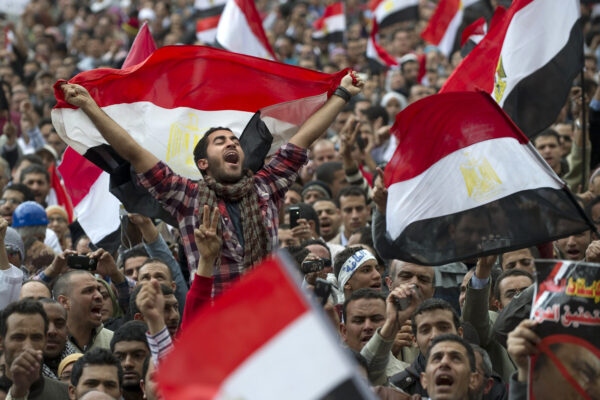50 years after the Bangladesh Liberation War which saw Pakistan’s Bengali majority Eastern wing become an independent nation, our contributor – the son of a muktijoddha (Bangladeshi freedom fighter) – reexamines the founding ideology of a national homeland for India’s Muslims that led to the Partition of the Subcontinent.
50 years after the Bangladesh Liberation War which saw Pakistan’s Bengali majority Eastern wing become an independent nation, our contributor – the son of a muktijoddha (Bangladeshi freedom fighter) – reexamines the founding ideology of a national homeland for India’s Muslims that led to the Partition of the Subcontinent.
On December 16, 1971, General Amir Abdullah Khan Niazi, Governor of East Pakistan and Commander of the Eastern Command of the Pakistan army, declared the unconditional surrender of the 60,000 troops fighting the Indian Army and the Mukti Bahini, the Bengali guerrilla resistance movement comprised of military, paramilitary and civilian units, during the Bangladesh Liberation War.
Announced on United Nations Radio just minutes before an Indian deadline to capitulate expired, the official surrender was formalised at Dacca Race Course (the old spelling of the Bangladeshi capital) with the signing of the “Instrument of Surrender” between Niazi and the Commander of the Indian army on the Eastern front, Lieutenant General Jagjit Singh Aurora.
This marked the most significant moment in the postcolonial history of the Indian subcontinent since Partition in 1947, ending a 13-day war between two nation-states which a Time magazine article from that time described as “the briefest but bitterest of wars between India and Pakistan” and which resulted in the creation of a third one: “Bangla Desh”, Land of the Bengalis.
Pakistan’s Founding Ideology: Sunk in the Bay of Bengal?
For Pakistan, Swadhinata Juddho (Bengali for “independence war”) proved to be a devastating defeat: around 90,000 West Pakistanis, most of them soldiers and paramilitaries, became prisoners of war and were only released under the Simla Agreement on July 2nd of the following year.
Furthermore, with the secession of its Eastern wing, Pakistan did not only lose around half of its population and its key economic center, but the lost war proved also to be psychological which saw its geopolitical weight in the region severely weakened.
That the country might have suffered a further, much more profound defeat, namely an ideological one, was something Indira Gandhi, India’s Prime Minister at the time, did not beat around the bush about when after the fall of Dhaka she declared that “[t]oday we have sunk Jinnah’s Two-Nation theory in the Bay of Bengal”, alluding to the founding ideology of Pakistan as espoused by the Pakistan Movement and the leader of the All-India Muslim League, Muhammad Ali Jinnah (who became independent Pakistan’s first Governor-General) and which was premised on the belief that Hindus and Muslims were two separate nations.
Therefore, the latter, fearing discrimination and irrelevance in a Hindu majority independent India, deserved a national homeland of their own.
This raises the question: was Gandhi, daughter of postcolonial India’s first prime minister, Jawaharlal Nehru, right? Did the loss of its Eastern wing in fact disprove Pakistan’s binary founding theory and the entire concept of national homelands separated along religious lines?
At first glance, it seems to look like that, since it was a Muslim majority territory that seceded from Muslim majority Pakistan, thereby rendering the belief moot that a common religion was a sufficient bonding agent for peaceful coexistence within a single nation.
Did it, therefore, require more than the belief in the same God in order to feel that “deep, horizontal comradeship” that historian Benedict Anderson described in his seminal work Imagined Communities as the hallmark of nationalism?
Or did the secession of Bangladesh merely disprove the nomenclature, but not the content it was meant to describe? Given the historical conditions that gave rise to the Two-Nation Theory in the first place, was Partition along religious lines simply inevitable?
As East Bengal was historically Muslim, did it have no other choice but to join Pakistan in national self-determination, despite cultural and ethnolinguistic differences and the distance between Karachi in the West, which became the provisional capital upon non-contiguous Pakistan’s independence, and Dhaka in the East numbering 1,500 miles with the landmass of India smack in between?
Communalism and the Difficulties of a Pan-Indian Nationalism
“During several struggles against colonial rule in the twentieth century, the myth of the nation has proved highly potent and productive. It was popular with a variety of independence movements because it served many of their intellectuals and leaders as a valuable ideal behind which resistance to colonialism could unite.”
So writes John McLeod in his book Beginning Postcolonialism, and if there ever was an ideological blueprint of anti-colonial resistance, the idea of nationalism was it. From the Nigerian “protectorates” under British rule (a euphemism for extortion invented by the original mobsters, European colonialists, who somehow managed to pull off the largest, longest, and most violent protection racket in world history) to Netherlands East-Indies (present-day Indonesia), the intellectual elites of many a colony weaponised this Western idea and in a prime example of the student becoming the master used it against their colonial overlords, mobilising the ethnoculturally heterogenous masses lumped together by haphazard and random colonial border-making into action against the foreign invaders.
In British India, where since the end of the 19th century under the auspices of the Indian National Congress (INC) an Indian nationalism began to develop, first demanding nothing more than greater political participation and only in later years full independence, a pan-Indian nationalism with Hindus and Muslims pulling together to achieve the same goal hit a brick wall in the early stages and eventually fizzled out into nothingness.
Why? According to historian Sekhar Banyopadhyay, Muslims contested the nationalist credentials of the INC, simply because they did not feel adequately represented in this majority Hindu organization (between 1892 and 1909, only 6.59% of Congress delegates were Muslim).
But despite this imbalance, Hindu-Muslim relations were relatively stable at that time, and Muslims were a long way from demanding a separate homeland, which would ultimately be the result of further alienation of India’s Muslim leaders from the INC’s increasingly secular nationalism and the zero-sum game of communalism that ensued and would soon be the defining character between Hindus and Muslims.
The Khilafat Movement and Hindu Nationalist Backlash
The rapid deterioration in the relationship between Hindus and Muslims began in the 1920s with the rise to prominence of a politico-religious solidarity campaign spearheaded by Indian Muslims and with the discomfiture and enmity it provoked among Hindus: founded in 1919, the Khilafat movement’s goal was to restore the political authority of the Ottoman Caliph, the leader of the ummah, after the 1920 Treaty of Sèvres which followed the end of World War I marked the beginning of the end of the Ottoman Empire, and with it, the institution of the caliphate.
Despite its focus being the Ottoman empire, the Khilafat movement could not divorce itself from the political and societal upheavals at home and became an agent of empowerment for Indian Muslims. Though it stood for communal harmony and became a part of Mahatma Gandhi’s non-cooperation movement against the British, the Khilafat movement’s role in strengthening Muslim identity in Muslim majority provinces like Punjab and Bengal had the adverse effect of Hindus feeling threatened in their identity.
Bandyopadyhay references French Indologist Christophe Jaffrelot, who wrote that the Muslim mobilisations in India under the banner of the Ottoman Caliphate “generated a sense of inferiority among the Hindus, who in emulation of their aggressive Other now started counter-mobilisation.”
This led to a period of communal violence between Hindus and Muslims and in the long term to such an irreparable decline in Hindu-Muslim relations that in 1927 Gandhi was prompted to say that solving the problem of communal disharmony “was now beyond human control, and had passed on to the hands of God.”
Parallel to the societal rift along religious lines, there was a political one happening, as mentioned earlier, for which no other was to blame but the Indian National Congress alone. Under Nehru, it began to separate nationalism from religion, and this secular vision of an independent India in which religion would take a backseat did not sit well with already alienated Muslims.
This unbridgeable gulf between the INC and the All India Muslim League, founded in 1906 out of a need for political representation of Muslims in British India, Bandyopadyhay aptly sums up as follows:
“A binary opposition was visualised between nationalism and communalism and therefore, whoever talked about community were dubbed as anti-nationalists or communalists. This eliminated the likelihood of accommodating the community identities within a composite nationhood and destroyed all possibilities of a rapprochement between the Congress and the Muslim League.”
Looking at the history of this formative decade that laid the groundwork for Partition, it is easy to see how the Muslims of India went from the minimum demand of political representation within the existing colonial structure of British India to the maximum demand of a separate post-independence homeland for India’s Muslims in the form of Pakistan.
But who would have foreseen that a mere twenty-four years after its founding, the country’s Eastern wing would secede in one of the bloodiest and most underreported civil wars, becoming Bangladesh, the Land of the Bengalis, and by doing so consigning the idea of a united Pakistan ideologically founded on the overriding identity marker of Islam to the history books?
Pakistan’s Democracy Deficit and Bengali Awakening
The reasons for United Pakistan’s collapse and secession of its Bengali-speaking Eastern wing into the sovereign nation-state Bangladesh are plentiful: the geographical anomaly of non-contiguous West and East Pakistan being separated by the large landmass of India; the cultural and linguistic differences; the economic exploitation of Bengali-majority East Pakistan and the discriminatory language politics by the Urdu-speaking political elite in the West that gave rise to the Bengali Language Movement, the precursor of the Bengali nationalist movement pursuing independent statehood.
But all these factors can be attributed to one overarching phenomenon, namely what G.W. Choudhury in his book The Last Days of United Pakistan called “the lack of democratic political order in the country.” He describes the political structure of Pakistan since its founding in 1947 as follows:
“The constitutional forms and trappings of democracy only provided a cloak for rule by the few who were able to concentrate power in their own hands. During eleven years (1947–1958) of so-called parliamentary democracy, there was not a single general election, and the provincial elections were described as ‘a farce, a mockery and a fraud upon the electorate.’ Well-organized political parties did not exist. […] The failure of parliamentary democracy led to the development of an all-powerful and irresponsible executive, aided and supported by a powerful bureaucracy. Pakistan was dominated by bureaucrats and soldiers.”
This absence of democratic structures had a key influence on the rise of Bengali-Muslim nationalism, one that had already existed since the 1930s as a distinct marker of identity distinguishing itself not only from the Bengali Hindus but also from Non-Bengali Muslims.
Yet in the throes of the Pakistan Movement, the Bengali Muslim agenda went under, and that it quickly gained traction within the political entity of Pakistan is a result of a rapid process of alienation similar to the one of the Muslims from the Hindu majority in British India, made possible by a democracy deficit of the Pakistani state that privileged the West Pakistani elite instead of the will of the people.
Even though Bengalis constituted a demographic majority in Pakistan at the time (of a population of 69 million, 44 million were Bengalis), the government, civil service, and military were dominated by West Pakistanis. Even in their own province, Bengalis were not adequately represented, with key government positions being filled by Pakistanis closely connected to the governing clique in the West.
To counter the systemic discrimination against the Bengali majority, Sheikh Mujibur Rahman, the figurehead of the Bengali Liberation movement who would become the founding father of an independent Bangladesh, presented a six-point plan that demanded political and economic autonomy for East Pakistan within a federal structure with limited central powers.
The Pakistani government saw this demand for self-rule as an attempt to destabilise the country and had Rahman and 34 others arrested. What in historiography became known as the Agartala Conspiracy Case led to a popular uprising in Bengali-majority East Pakistan, resulting in the downfall of Pakistan’s military dictator General Ayub Khan in 1969. The charges against Sheikh Mujib (as he is popularly called) were dropped and he was released from prison to a hero’s welcome.
Under the rule of Ayub Khan’s successor, army chief Yayah Khan, who suspended the constitution and reinstated martial law, the ongoing protests in East Pakistan ultimately forced him to hold the first and only elections in United Pakistan in1970, twenty-three years after gaining independence.
Despite the landslide electoral victory of Sheikh Mujib’s Awami League party (which is the governing party in Bangladesh today under prime minister Sheikh Hasina, the daughter of the country’s founding father), Khan refused to hand over power, offering Sheikh Mujib a power-sharing agreement instead, which he naturally refused.
On the night of March 25, 1971, the Pakistani army launched Operation Searchlight, a military crackdown in East Pakistan designed to wipe out the Bengali nationalist movement, sparking the Bangladesh Liberation War and a genocide against the Bengali people which political scientist and journalist Gary J. Bass in his award-winning monograph The Blood Telegram: Nixon, Kissinger and a Forgotten Genocide described as ranking “as bloodier than Bosnia and by some accounts in the same rough league as Rwanda” would last nine months until the surrender of the Pakistani army and the establishment of an independent Bangladesh.
The Legacy of the Two-Nation Theory
Given the historical trajectories described above, it should become clear that the idea of a national homeland for Indian Muslims as espoused by the Two-Nation Theory was – simply put – good in theory, but bad in its practical implementation.
Although the secession of Pakistan’s Eastern wing does cast doubt on the power of shared religion as an overarching marker of identity, the creation of Bangladesh does not necessarily delegitimise the theory when one considers the historical determinants that gave rise to it.
But a question one should ask is whether the concept of Pakistan as a national homeland for India’s Muslims has lived up to its expectations: despite the population transfers during the bloody episode of Partition, one-third of the Muslim population did remain in India. The Muslim population of India today is 195 million, a number that roughly equals the Muslim population of Muslim majority Pakistan.
On the other hand, the Muslims of India are facing unprecedented levels of discrimination and persecution under the Hindu-extremist BJP government of Narendra Modi who for the past years has successfully been normalising his party’s Hindutva ideology. He continues to stoke the flames of communal disharmony, providing carte blanche to his followers and even more right-wing entities than the BJP to victimise Muslims, with next to no condemnation from the Western-dominated “international community” which routinely hands the Hindu supremacist Indian government the same Get Out Of Jail Free card as it does to the Jewish supremacist Israeli government in its persecution of Palestinians.
If one argues that the creation of Bangladesh disproved the Two-Nation Theory, then the reality of Modi’s India has definitely rehabilitated it. And while it might be moot to ruminate on what could have happened and it is always easier to analyse something in hindsight, I can’t help but wonder if the dismemberment of Pakistan in the form of Bangladeshi secession wasn’t a foreseeable event if one looks at the different motives of the various Muslim majority provinces of British India for “signing up” to an independent Muslim homeland.
In his book The Separation of East Pakistan, Hassan Zaheer writes:
“To the Muslim intellectuals of northern India, influenced by the Aligarh school of thought, the demand for Pakistan was the culmination of the Muslim renaissance movement initiated by Sir Syed Ahmed Khan in the latter half of the nineteenth century. […] They assumed a cultural and linguistic unity of Muslims which was not there. For the Muslims of Bengal, economic emancipation from Hindu domination was the immediate and tangible consideration in the pursuit of a separate Homeland.”
This ideological discrepancy regarding a common end might have constituted the flawed premise of the Two-Nation Theory. But whatever its shortcomings, it seems to have been inevitable at the time of its inception and implementation, and not even the necessary emancipation of Bangladesh from Pakistan in 1971 can retroactively rewrite the shared colonial and postcolonial history of the Indian subcontinent that gave rise to the Two-Nation Theory and the Pakistan Movement in the first place.





